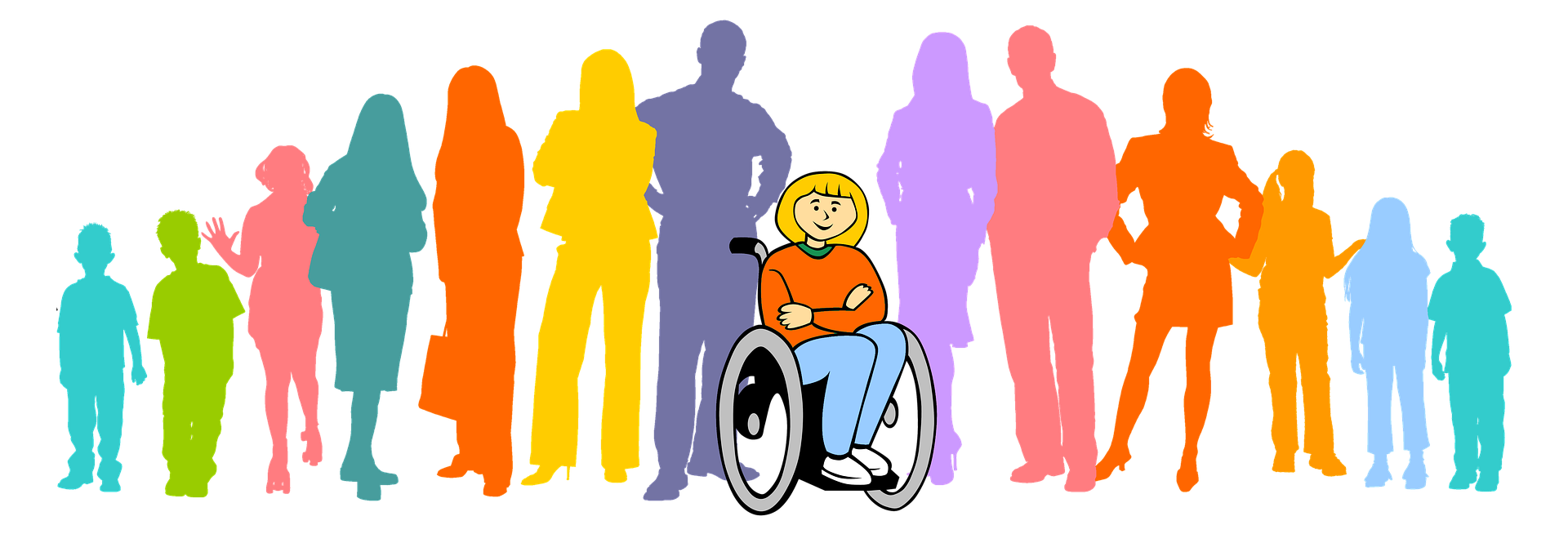
Why is Disability Inclusion Important?
Let's first talk about what, exactly, disability inclusion means. The word inclusion has been used in conjunction with sexual orientation, which is why it's important to distinguish disability as the topic for discussion here. And just for clarification, the word inclusion for people with disabilities has been used for much longer than people with gender identity issues. In a related article put out by the White House, there are four core areas addressed, with outcomes of full participation in mind.
The ADA - Core Areas
The ADA (Americans with Disabilities Act) is grounded in core outcomes of full participation that include: equal opportunity, independent living, and economic self-sufficiency. Therefore, these four areas of public life are currently addressed: public accommodations (businesses), employment, transportation, and community living. But there are still many barriers to accessibility for people with disabilities to participate fully and achieve these outcomes. Disability inclusion is a huge part of the solution.
The U.S. Summit for Democracy and Disability Inclusion
This year on December 3rd, which was the International Day of People with Disabilities, the United States met with other governments and societies around the world to discuss disability inclusive democracy, as part of the U.S. Summit for Democracy. The Summit gives us valuable insight into other inclusive practices being developed all over the world.
What's it All About?
The idea is that instituting strong disability inclusion programs will strengthen communities everywhere in the free world, including people with disabilities. You may be asking, why is disability inclusion important? Because people with disabilities have a lot of worthwhile qualities and different abilities to offer the rest of us.
Removing Barriers
Making some really very minor adjustments and implementing more inclusive practices within our communities, we can remove the barriers to disability inclusion. This year, the Administration has signed executive orders to assess and advance the DEIA (diversity, equity, inclusion, and accessibility) factors within federal government agencies.
WHO & CDC
The World Health Organization and Center for Disease Control define disability inclusion as understanding the relationship between the way people function and participate in society, making sure everyone has an equal opportunity to be able to participate fully, or to the best of their abilities.
Inclusive Workplaces
An inclusive workplace will have a working environment that is physically accessible to disabled people, first of all. The building will, in other words, be ADA compliant, with proper ramps, parking, facilities, and proper ADA signage for easier navigation ability, for people with disabilities. An inclusive workplace will be open to hiring people with disabilities. Companies who do hire people with disabilities in a workplace that practices disability inclusion will experience better employee retention and a more efficient and productive community of employees overall.
Employers
Inclusive employers understand what a reasonable accommodation is, providing assistive technology or even hiring a translator who knows American sign language if necessary. If any new barriers present themselves in the work environment, as the organization may evolve, employers are attentive and quick to find a solution. The workplace will be a community of employees that participate in problem-solving techniques and the decision-making process as a part of everyday activities. This is disability inclusion at its finest.
Does the Type of Disability Matter?
No. Whether the individual can perform the job duties of the position, with or without reasonable accommodation, is what matters. Even those with mental health or seizure disorders can often perform in the workplace with medication. You are not required to keep employees whose disability is drug addiction that you suspect are actively using.
Diversity in Employment
The Job Accommodation Network attempts to bring more awareness and diversity to companies without experience in hiring people with disabilities and helps working-age Americans with disabilities apply for jobs they are qualified to do. Some companies will have more accessibility issues than other companies, depending on what they do and who is running the organization. A lot may depend on whether they have access to the funds to make the necessary accommodations.
Ideal Outcomes
In the ideal situation, employers and their employees would have serious discussions about social justice, human rights, and related topics, encouraging open communication and active participation from everyone - including people with disabilities. Access to these companies would be all-inclusive and there would be no barriers to overcome. Employees would use appropriate language that is non-discriminatory at all times.
Becoming ADA Compliant
If you are a business owner, in particular, you can access information and guidelines on becoming ADA compliant here. One in four Americans, roughly 25% of the adult population, has a disability. Therefore, this is a significant portion of potential employees as well as customers, currently untapped. Besides, the fact of the matter is, it's a federal law for all businesses to be ADA compliant. There are steep fines, even for the first violation, in addition to possible lawsuits and bad press.
ADA Signs - ADA Central
ADA Central is the authority on all things ADA, for businesses. We specialize in ADA-compliant signage, and in addition to a huge stock inventory of standard ADA required signs such as our handicap signs, we also do custom sign work. You can even choose to expedite your order online by checking the box - it's as simple as that. When your business is on board for becoming ADA compliant, remember ADA Central for all your ADA signage. In addition, don't forget to click on the link above for the official ADA Standards for Accessible Design. Here's to disability inclusion for everyone.
Previous article: The Americans with Disabilities Act and Bob Dole

